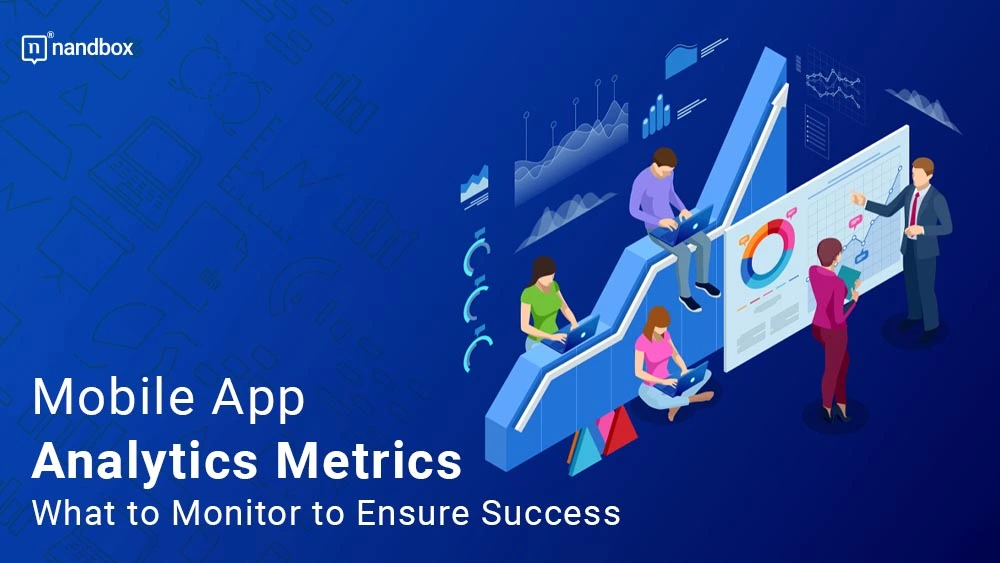Mobile App Analytics: A Complete Guide
Some people may associate analytics with a lot of information, data, and research that is only done for large organizations and that only professionals care about. Yes, part of this is true. However, analytics is beneficial to any-sized business, regardless of its size or industry. As for mobile apps, in particular. Analytics can provide deep insight and an understanding of users and their behavior. As a result, this would benefit the business, helping them to maximize their performance. In this article, we will discuss mobile app analytics, how to set it up, and what mobile app analytics metrics businesses should keep an eye on.
Definition of Mobile App Analytics
Mobile app analytics is a critical tool for businesses to understand how their users interact with their apps. It involves collecting, analyzing, and interpreting accurate data to gain valuable insights into user behavior, preferences, and needs. This data can then be used to improve the user experience and optimize the performance of the app. By having an understanding of the different types of mobile app analytics metrics, businesses can develop strategies to improve their apps and enhance their profits.
Benefits of Mobile App Analytics
The significant surge in the number of apps, as well as the number of users reaching 3 billion app users worldwide, is shocking. This, in turn, left businesses no choice but to look for mobile app analytics to be able to analyze and track their performance and interpret their users’ behaviors and needs. It almost became a necessity. The benefits of mobile app analytics are countless, and one article wouldn’t be enough. However, we are going to highlight the most important three.
1. Give Businesses Better an In-Depth Understanding of Users
Mobile app analytics are the perfect tool for gaining deeper insights into your users and how they interact with your app. With accurate mobile app analytics metrics, you can gain a better understanding of the users’ needs, preferences, and behaviors, enabling you to provide them with a better user experience. By taking advantage of the data that mobile app analytics provides, you can make better decisions about how to optimize your app for your users and create a better product for them. Additionally, integrating a web scraping API can help gather competitive data, offering valuable insights into market trends and helping further refine your app’s features to meet user expectations.
2. Help Improve the Rate of Investment
In such a heavily competitive industry as the mobile app industry, businesses need to sort their priorities. Business owners cannot afford to take the risk of investing in the wrong areas and receiving no returns. Mobile app analytics can be used to identify areas where you are spending too much money on development or marketing. By examining the performance of your app, you will be able to identify which areas need to be cut and which areas need to be improved in order to maximize your return on investment. Additionally, you can use mobile app analytics to analyze your marketing campaigns and identify which ones are generating the most ROI for your business.
3. Help With Customization and Maintenance of the App
Another benefit of mobile app analytics, which is contingent on gaining a better understanding of your users, is identifying any room for improvement. This includes the app’s customization and functionality. By identifying your users’ needs, app developers can customize the app experience to better meet their preferences. Additionally, mobile app analytics can help you identify any areas for improvement or any bugs that need to be fixed. As a result, this would help you maintain your app and keep it up-to-date with the latest trends and technologies.
Common Mobile App Metrics
Now that we have discussed the benefits of mobile app analytics, let’s look at some of the most common mobile app metrics.
I. Active Users
Active users are the number of users that are actively engaged with an app throughout a specified time period. For instance, the daily active user (DAU) is a unique user engaging with your app in a 24-hour window. The monthly active user is the unique user engaging with your app during a 30-day window.
II. Engagement
Engagement is a measure of how often users interact with an app and for how long they use it. There are several methods to measure engagement, such as time spent in the app, the average number of sessions a user spends per day, week, or month, and the number of interactions per user. It’s important to measure engagement to understand how users interact with your app.
III. Retention
Retention is the percentage of users that continue to use an app over a specified period of time. Let us say that you have 1000 users, and 500 of them use your app continuously or frequently. Thus, your retention rate is 50%, which indicates that your app is performing well. It is important to measure retention in order to understand how successful your app is at retaining its users and keeping them engaged. Retention can be measured in terms of daily, weekly, and monthly retention.
IV. Downloads
Downloads are the total number of times an app is downloaded from the Apple App Store or Google Play Store. It is important to monitor the download rate of your app in order to measure the success of your app and to understand which marketing channels are working the best. In addition, which segment of the audience is your app receiving the most attention from?
V. Uninstalls
Uninstalls are the number of times an app is deleted from a user’s device. It is important to monitor the uninstall rate of your app in order to understand why users are deleting it. This can help you identify areas for improvement and optimize the user experience.
VI. User churn
User churn is one of the most important metrics that every app and business owner should keep an eye on. It is the number or percentage of users who stopped using your app during a certain period of time. User churn is calculated by subtracting the number of users you had at the start of the specified period from the number of users you end up with at the end of the specified period. It is important for every app owner to try as hard as they can to always make this number or percentage as close as they can get to zero. This can be done by improving the app and always keeping it up-to-date.
Popular Mobile Analytics Tools
There are a plethora of mobile analytics tools available to help businesses track and interpret their data. Some of the most popular analytics tools are Google Analytics, App Radar, Apple Analytics, Count.ly, and AppsFlyer. Each of these tools provides detailed metrics and insights into user engagement, app performance, and more. For instance, AppsFlyer provides real-time data and insights into user behavior, while Google Analytics provides detailed information about in-app payments and revenue. App Radar provides powerful analytics with predictive analytics. A business can learn a lot about its users and the way they use its apps by utilizing any of these powerful analytics tools.
In Summary
The impact of mobile analytics on a business cannot be overstated. When used properly, mobile app analytics can help organizations track user engagement, identify areas for improvement, and increase their return on investment. By understanding the different types of mobile app analytics metrics, businesses can develop powerful strategies. In order to optimize their app’s performance and drive it to success. But what if you discovered a platform that allows you to easily develop your app while also tracking mobile app analytics metrics? I know it seems implausible, but trust me when I say it’s absolutely real. nandbox was successfully able to accomplish that. The nandbox app builder provides businesses with an easy-to-use platform for both developing and tracking their mobile app analytics. With nandbox, businesses can access powerful analytics tools with predictive analytics, in-app payments, and revenue tracking.
Not only a powerful tool for analytics but also for developing a fully-functional native app. You can choose from a vast collection of features that would be beneficial for any business or app category. As well as plenty of templates, including clones of popular apps like Facebook and Instagram. What could be better than having everything you need in one place? Try the nandbox app builder today!






